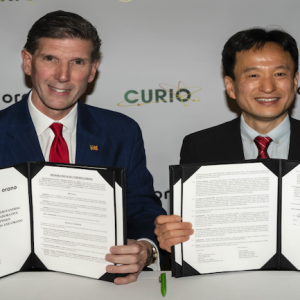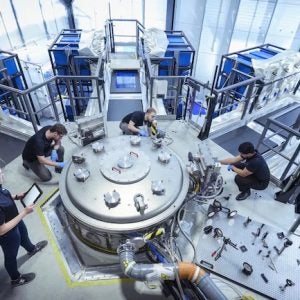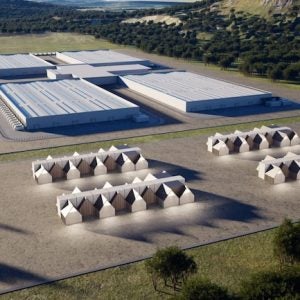 Norway’s Norsk Kjernekraft has signed a letter of intent with Denmark's Seaborg Technologies to investigate the possible deployment of Seaborg's compact molten salt reactor (CMSR) in Norway.
Norway’s Norsk Kjernekraft has signed a letter of intent with Denmark's Seaborg Technologies to investigate the possible deployment of Seaborg's compact molten salt reactor (CMSR) in Norway.
Initially, Norsk Kjernekraft plans to establish small modular reactors (SMRs) based on conventional technology, "in order to relieve the increasingly demanding energy situation as quickly as possible". However, the company says it is also “looking even further ahead, where Seaborg's advanced technology will play a very important role in the emission-free energy mix of the future, particularly with respect to industries that are difficult to decarbonise through electrification".
Norsk Kjernekraft CEO & Board Chairman said to address the challenges facing Norwegian industry in the transition to a low-carbon society, a broad portfolio of energy technologies is needed. “The technology of our Danish partners will play a significant role here, and there are numerous indications that Seaborg's technology will come sooner than many had imagined. Therefore, we are already considering how this technology can best be introduced in Norway.”
Seaborg’s CMSR is a thermal spectrum molten salt reactor mounted on a barge. In the CMSR the fuel is mixed into a molten fluoride salt which also acts as the coolant with significant safety benefits. Seabiorg says that, should the fuel salt come into contact with the atmosphere, it will simply cool down and become “solid rock, containing all the radioactive material within itself”. The reactor “will operate at near-atmospheric pressures eliminating a wide range of accident scenarios”.
Originally the CMSR was to use high-assay low-enriched uranium (HALEU). However, earlier in July Seaborg confirmed its decision to change to low-enriched uranium (LEU) due to the risks associated with developing a sufficient supply of HALEU to meet its planned timeline. Seaborg has announced a collaboration with Urenco to develop HALEU capacity for future CMSR product lines, while at the same time investigating LEU fuel salt possibilities for the first product line.
The change from HALEU to LEU will require the moderator technology to be changed from sodium hydroxide (NaOH) to graphite. Seaborg says CMSR development “will rely on the design progress already achieved as well as building on the established track record of graphite in nuclear reactor design and operation”. According to Seaborg’s website, detailed design is expected to begin in 2024 with the first barge operating in 2028.
In June, South Korea’s Kepco Nuclear Fuel (KNF) and GS Engineering & Construction (GS E&C) signed memoranda of understanding to collaborate with Seaborg to investigate the feasibility of developing a LEU fuel salt production facility in South Korea.
In April, Korea Hydro & Nuclear Power (KHNP), Korean shipbuilding and offshore construction company Samsung Heavy Industries (SHI) and Seaborg set up a consortium to develop and commercialise floating NPPs (FNPPs) using CMSRs. In January, South Korea’s Samsung Heavy Industries (SHI) received Approval In Principle from the American Bureau of Shipping (ABS) for a conceptual design of a CMSR power barge using Seaborg technology.
Seaborg CEO Navid Samandari says: “Norsk Kjernekraft is taking a leading role in the promotion and build-out of nuclear energy in Norway, and we are very excited to work with them. On top, we see new nuclear as a great addition to the Norwegian energy mix, supplementing hydro and other renewable sources in transforming the future of energy in Norway, setting a great Scandinavian example for newcomer countries to nuclear.”
In June, Norsk Kjernekraft signed a letter of intent with TVO Nuclear Services – a consulting company wholly owned by Finnish utility Teollisuuden Voima Oyj – to jointly investigate the deployment of SMRs in Norway. The Norwegian municipalities of Aure, Heim, Narvik and Vardø are working together with Norsk Kjernekraft to investigate the technical, financial and safety aspects of building one or more SMRs in their areas, taking into account local conditions and input from the residents of the municipalities.
Norsk Kjernekraft aims to build, own and operate small modular nuclear power plants in Norway. The company was founded to meet the rapidly increasing demand for energy solutions in Norway with both low greenhouse gas emissions and at the same time the least possible impact on the natural environment.
Image: Seaborg's Eirik Eide Pettersen and Norsk Kjernekraft CEO Jonny Hesthammer (courtesy of Seaborg)






